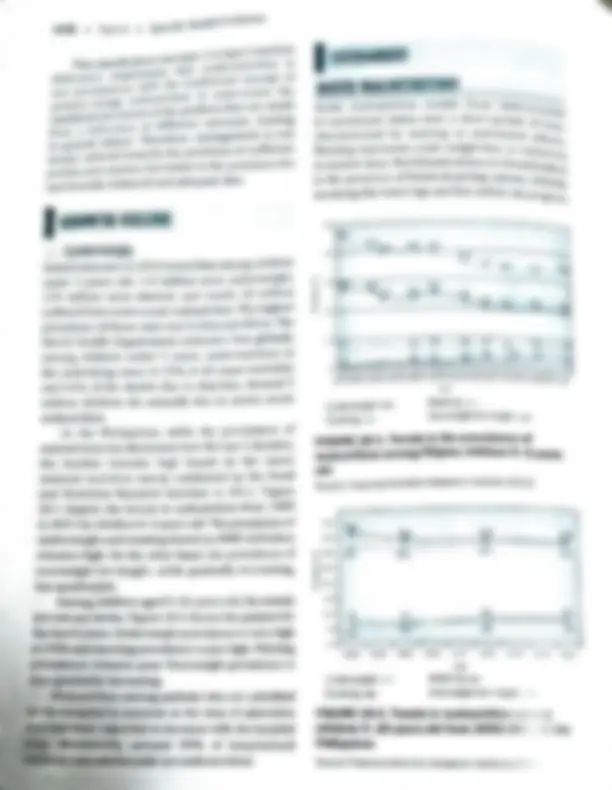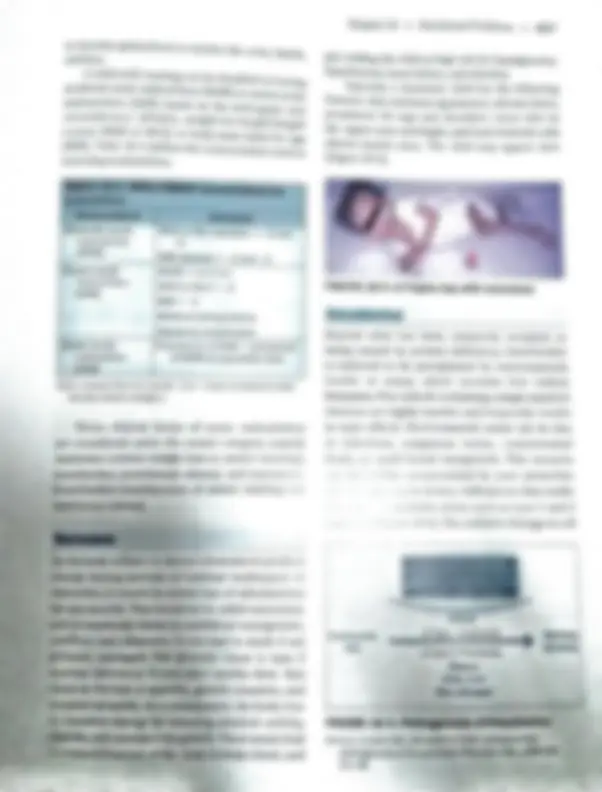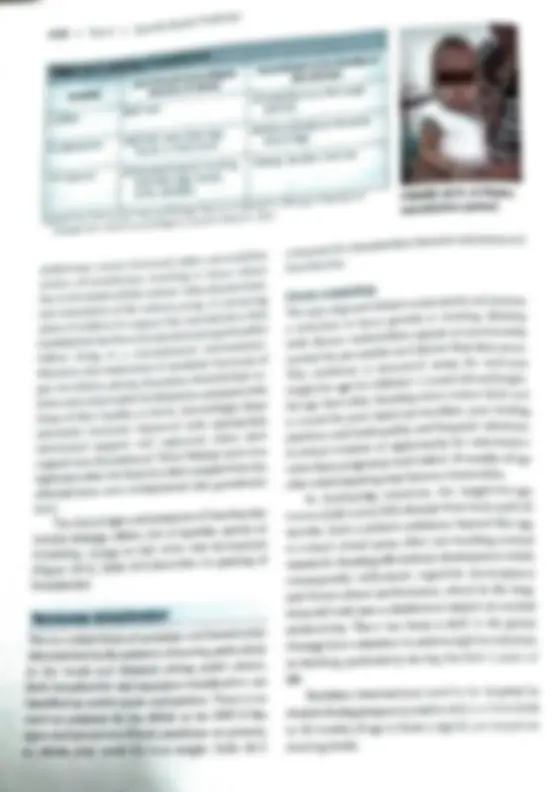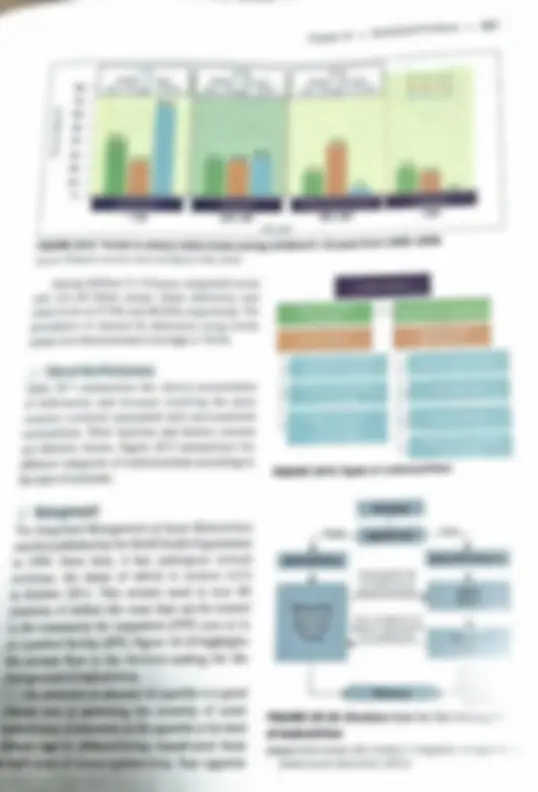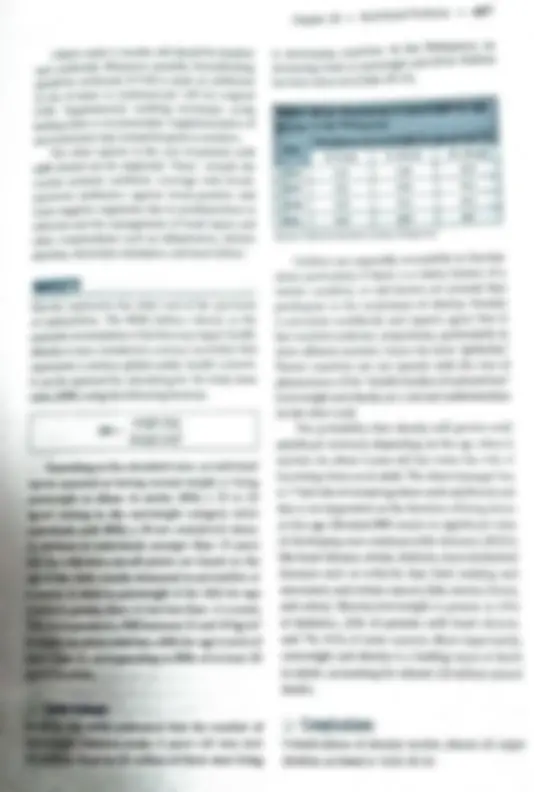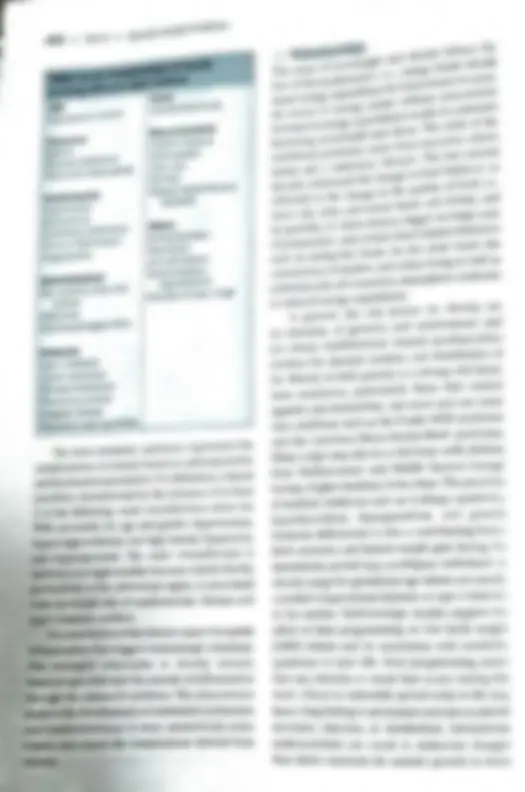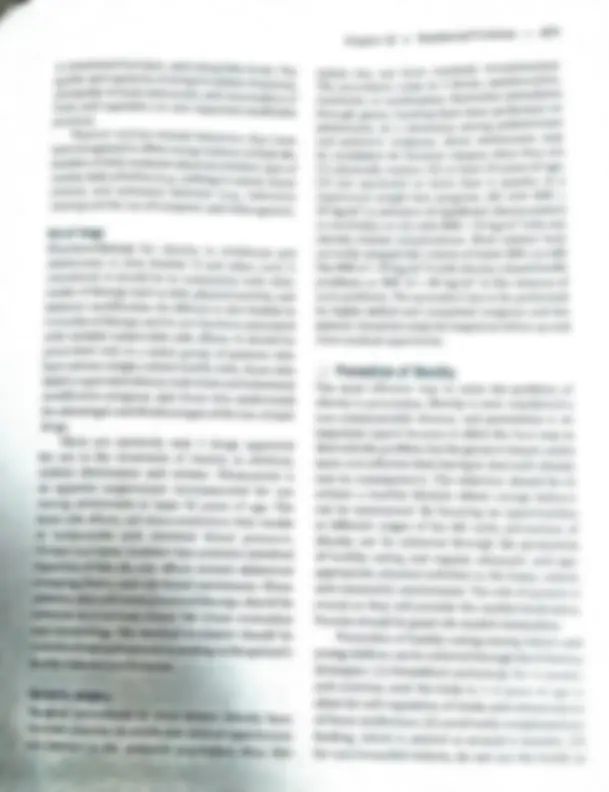Partial preview of the text
Download navarro nutritional problem and more Lecture notes Pediatrics in PDF only on Docsity!
MTA ae Jossie M. Rogacion ¢ Juliet S. Aguilar and impact of nutrition | = Describe the various categories of _ disorders “ ern » Discuss the basic assumptions: y utrition is the process by which food or N« components are taken in, processed, and utilized by the body for growth, proper functioning, and overall well-being. Food or food components are made up of nutrients which can be preformed or converted to simpler substances to generate energy, contribute to cellular structure, or act as co-factors in biochemical and metabolic is, Oe Nutrients are classified—depending on the amount that is needed by the human body—into and micronutrients. Additionally, water is also considered a nutrient. - Macronutrients are needed in relatively large “amounts and primarily function as sources of energy. They are also necessary in stimulating growth and tissue repair. They are composed of carbohydrates, |. proteins, and fats. Micronutrients are needed in qinute amounts and function mainly as co-factors “in many chemical processes in the body. They include vitamins, minerals, and trace elements. Table 18-1 ists the nutrients that have nutritional importance tohumans. “Once, traditionally considered as purely gastrointestinal or digestive in nature, nutrition at pr has gone beyond this conventional view and is now regarded as a significant contributor to Water-soluble health and disease, affecting and interacting with various organ systems. Notable examples include the interaction between nutrition and brain structure and function; the relationship among nutrition, infection, and immunity; and nutrition as it affects renal, cardiac, and bone metabolism. Moreover, nutrition is now thought to affect a continuum of life stages. Prenatal and infant nutrition is believed to impact nutrition in later life and may contribute in the development of adult lifestyle diseases, including . Nutritional disorders result from any of the following: deficiency, excess, and imbalance of 
